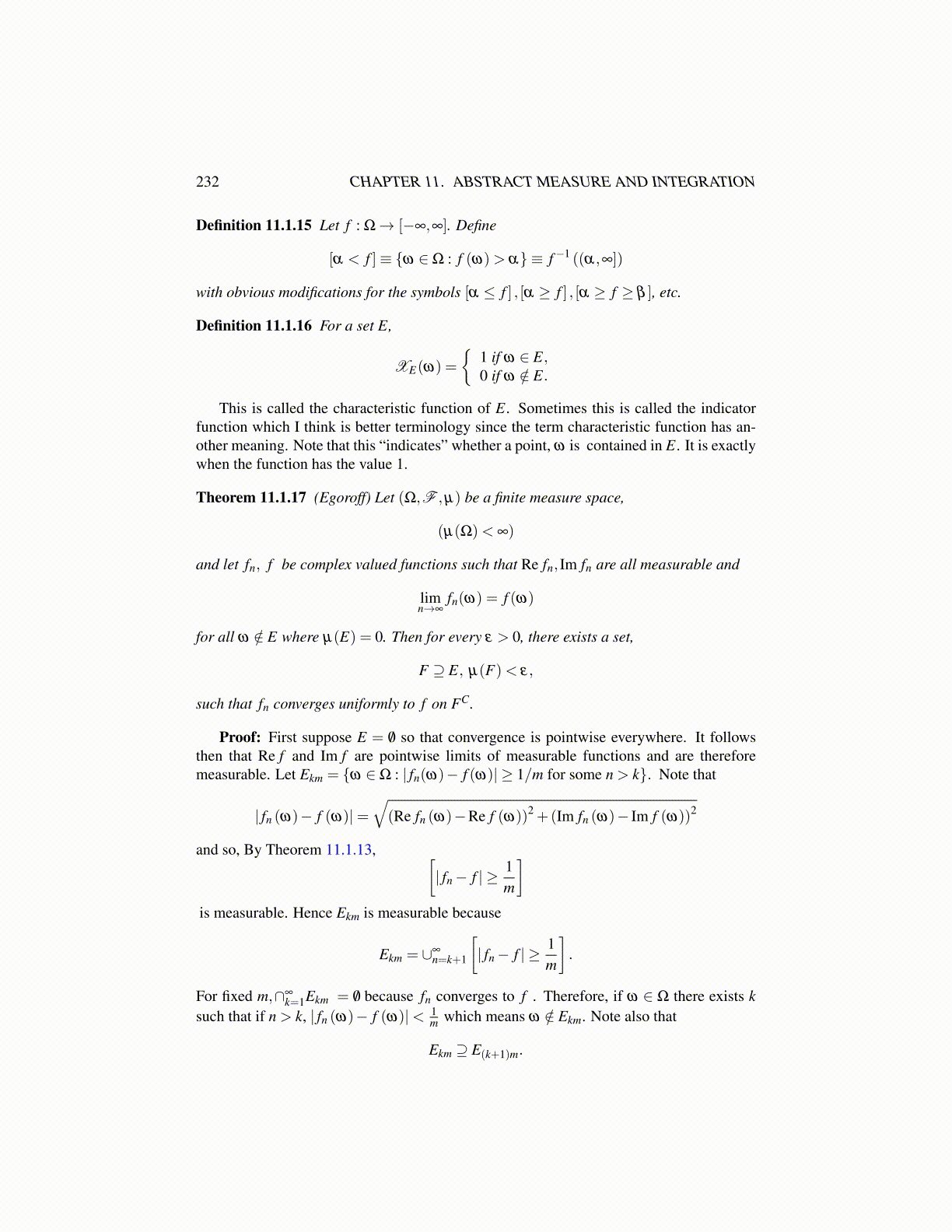
232 CHAPTER 11. ABSTRACT MEASURE AND INTEGRATION
Definition 11.1.15 Let f : Ω→ [−∞,∞]. Define
[α < f ]≡ {ω ∈Ω : f (ω)> α} ≡ f−1 ((α,∞])
with obvious modifications for the symbols [α ≤ f ] , [α ≥ f ] , [α ≥ f ≥ β ], etc.
Definition 11.1.16 For a set E,
XE(ω) =
{1 if ω ∈ E,0 if ω /∈ E.
This is called the characteristic function of E. Sometimes this is called the indicatorfunction which I think is better terminology since the term characteristic function has an-other meaning. Note that this “indicates” whether a point, ω is contained in E. It is exactlywhen the function has the value 1.
Theorem 11.1.17 (Egoroff) Let (Ω,F ,µ) be a finite measure space,
(µ(Ω)< ∞)
and let fn, f be complex valued functions such that Re fn, Im fn are all measurable and
limn→∞
fn(ω) = f (ω)
for all ω /∈ E where µ(E) = 0. Then for every ε > 0, there exists a set,
F ⊇ E, µ(F)< ε,
such that fn converges uniformly to f on FC.
Proof: First suppose E = /0 so that convergence is pointwise everywhere. It followsthen that Re f and Im f are pointwise limits of measurable functions and are thereforemeasurable. Let Ekm = {ω ∈Ω : | fn(ω)− f (ω)| ≥ 1/m for some n > k}. Note that
| fn (ω)− f (ω)|=√
(Re fn (ω)−Re f (ω))2 +(Im fn (ω)− Im f (ω))2
and so, By Theorem 11.1.13, [| fn− f | ≥ 1
m
]is measurable. Hence Ekm is measurable because
Ekm = ∪∞n=k+1
[| fn− f | ≥ 1
m
].
For fixed m,∩∞k=1Ekm = /0 because fn converges to f . Therefore, if ω ∈ Ω there exists k
such that if n > k, | fn (ω)− f (ω)|< 1m which means ω /∈ Ekm. Note also that
Ekm ⊇ E(k+1)m.